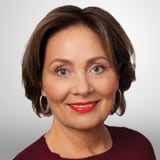While interest rates do have nowhere to go but up, investors who acted too early missed some nice gains recently. Janet Brown of NoLoad Fund*X explains how her organization is adapting its portfolios in the current market.
Janet, you've been in the business for 35 years, back when you were using a hand calculator to calculate the returns on no-load mutual funds—which were not being pushed by anyone, the brokerage firms or anyone else. I recall those years.
It was probably a little later, at our conferences in the late '70s, when we began to really focus on the wonderful investment characteristics that Jack Bogle first brought up, which is that intermediary costs are the biggest factor to long-term performance.
Yeah. Funds, of course, are very efficient ways to follow market leadership. There's a fund for anything…as you know. The industry has grown so tremendously. Now you can buy a fund that invests in practically any sector of the equities, or fixed income, or commodity, or geographic region.
It's the fixed income area that I'm interested in talking to you about. It seems to me for a fixed-income investor using your Upgrader strategy could be exactly the right prescription in today's environment. It looks like we're going to have rising interest rates and rising inflation which is a terrible thing for fixed income.
It is. So all the more reason to be active and to be flexible.
So what's your fixed-income strategy doing today? How's it performing? How's it different than what it might have been during the easy years? Because we've had three decades of declining interest rates.
We have had 30 years of declining interest rates and as you say, many people agree rates have nowhere to go but up. That being said, people have been saying that for a year or more and some missed out on some pretty good returns.
We have been able to bring in double-digit returns actually in our flexible fixed-income strategy,, because we're not relying on our own forecast, or what we think is going to happen and when rates are going to change. Rather, just like on the equity side, we take a snapshot of what is happening right now and align with that.
It's a little different in the fixed-income market because often the highest-our returning bonds are often the riskiest. So we have to put some real risk parameters around our fixed-income strategy.
How we do it is we separate bonds into five different buckets—for instance, high-yield bonds would be one bucket. Our own limitation is 30%…we would never put more than 30% of our portfolio into high yields. Foreign is another area where we want to put a cap on the maximum. The only areas that we don't are really the short term and really defensive bond funds. There we can go up to 100%.
So what's it doing right now? It was at double digits in 2010. In 2011 it's been performing well. You're saying high yield is a heavy allocation in the fixed-income market?
Well, we're about 25% in high yield right now.
What are the other areas? Foreign?
The other areas are foreign. We have a category we call strategic. For instance, Loomis Sayles Bond Fund (LSBRX). Great manager there. We classify him as strategic because he can go anywhere. So he will have some high yield in that portfolio, too.
Hybrid is another area that really distinguishes us from most fixed-income managers. We don't only just buy bonds. What we consider hybrid are non-correlated funds.
For instance, merger or arbitrage funds. These are very low volatility total-return funds that are not going to be as interest-rate sensitive as a straight bond fund. So we include some of these types of total-return funds and are what we call the Flexible Fixed Income Fund (INCMX).
So we can be slightly defensive when rates do turn by going very short, by buying some of these non-correlated sectors. But yes, we do buy foreign. We do buy emerging market bond funds at times—intermediate, short.
Okay, what's the approximately return that you're getting, the current return, in terms of yield on the bond fund strategy right now?
Well, these are really designed as a total-return portfolio, so we're really not going for current yield. But let's see…for the 12 months through the end of April, I'm showing INCMX was up 8.16%. That compares to 5.36% for the Barclay's aggregate bond index. So slightly better than the bond index. That was the 12-month period through April.
Over time, it is a risk-managed strategy. We don't want to take too much risk in it. In fact, it's absolutely managed never to lose more than 6%. So if the bond market falls apart, we'll be short term and defensive.
Do you offer another strategy specifically in the area of non-bond, income-oriented investing?
We do have a couple of tactical strategies, and these are specifically risk-management tools.
We're well known for our long equity growth portfolios, and that's really how we started over the last 35 years. We have put additional layers on our primary upgrading strategy, so we do adjust asset allocations and apply some defensive measures to actively manage risk. So we have a couple of tactical funds.
What kind of funds would be in that portfolio?
Well the FundX Tactical Total Return Fund (TOTLX) can invest in equities and fixed income. It can also use options. So, that fund is designed for a much smoother return than a fully invested long portfolio. It can hedge.


















